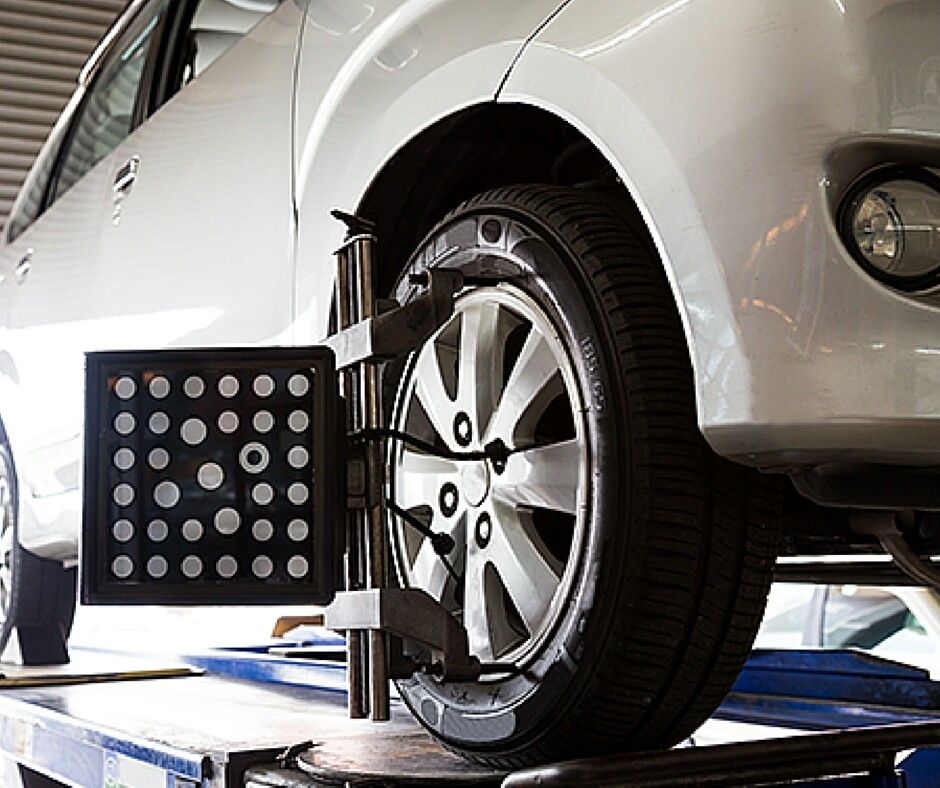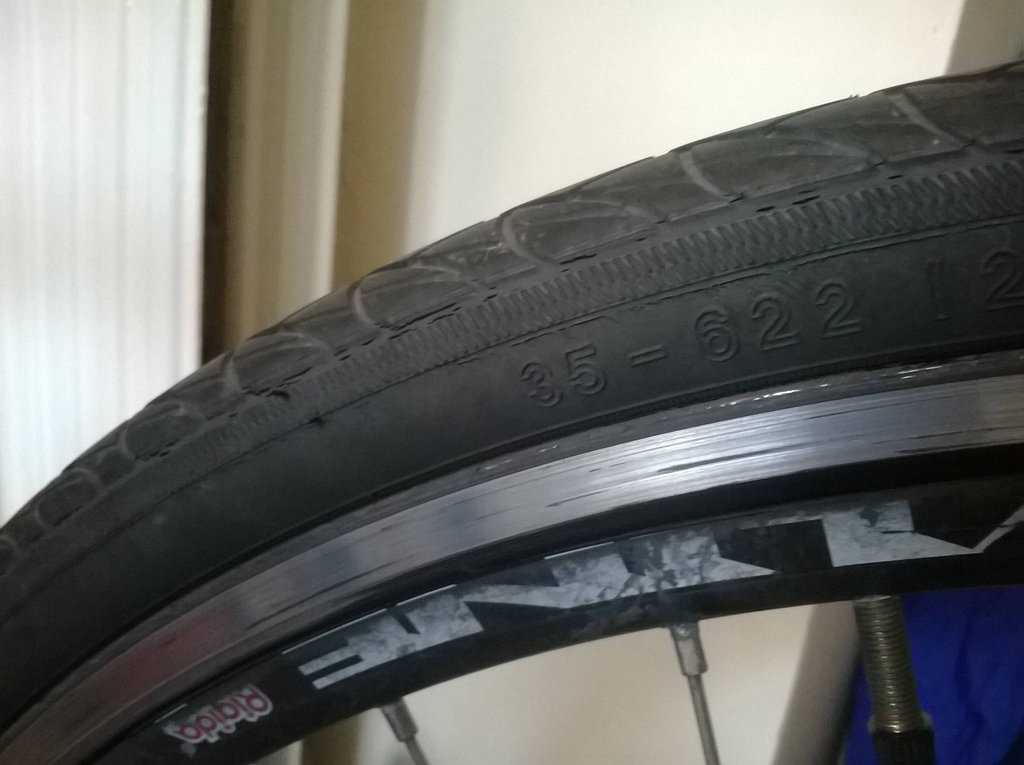Posted by Benjamin Jerew Know How
In 2022, over 342 million passenger tires were shipped in the United States, according to the U.S. Tire Manufacturers Association. Given that Americans drive over three trillion miles every year, according to the Department of Transportation, those millions of tires are needed to replace worn, damaged, aged or dry-rotted tires. When considering tire replacement for your vehicle, whether they’re winter tires that have been in storage or tires you got from a friend, it’s important to know how to tell if tires are dry rotted. If a tire dry rots, tire components, such as the tread, sidewalls, belts or bead wire, may separate from each other. Tread separation or sidewall blowout at highway speeds could result in a crash. Here’s how to determine if your tires are safe to drive on.
Tires age as soon as they’re manufactured, ideally lasting up to 10 years, but shipping, handling and exposure accelerate aging and dry rot, shortening their life. Dry rot itself is a condition that affects the material that the tire itself is made of, so it isn’t a foreign substance that can be removed like mold. Obviously age is a major factor for dry rot in tires and cannot be mitigated, but exposure to ultraviolet (UV) light can also dry rot tires. Sunlight (especially if you live in a place with warm weather) is a common cause of tire sidewall dry rot damage. If you ever drive by an RV camp ground you will notice many vehicles with special covers over the tires to help reduce UV tire damage.
While not a direct cause of dry rot on tire materials, a lack of tire maintenance can speed up tire failure. Driving on underinflated tires causes more wear on the tire tread and more flex in the tire side wall. This leads to heat that damages the tire and may speed up tire failure. Hauling too much weight can also damage a tire, so pay attention to tire load ratings. Pushing tires over their limits combined with dry rot will greatly shorten tire life.
A close look at your tires will help you determine whether they’re safe for service or ready for recycling. Cracks on the surface of the rubber, whether on the tread, shoulder or sidewall areas, are a good sign your tires are ready for recycling. These surface cracks are an indication that your tires have deeper cracks you can’t see, such as where the tread or sidewalls bond to the belts. The top layer of rubber will likely be hard but brittle. If any pieces of the tire crumble or fall off it is a sure sign that dry rot has set it and the tire must be removed from service immediately. Color can also be affected by dry rot so if the tire looks more grey than black it may be dry rotted.
Another factor is the DOT code, an alphanumeric string that’s usually eight or twelve digits long, molded into the tire sidewall. A valid DOT (Department of Transportation) code means the tire meets DOT safety standards. The DOT code or tire identification number (TIN) looks something like this:
DOT PCTS PWPY or DOT PCTS OMFR PWPY. Here’s what each section of the code means:
Here’s what each section of the code means:
For example, if the DOT code reads DOT U2LL 5117, the tire was made by Sumitomo Rubber Industries, Japan (U2), size 245/50R16 (LL), in the 51st week (51) of the year 2017 (17). Those last four digits are the most important piece of information. Even if you bought a set of tires brand new, they may have sat in a warehouse for months or longer. Most manufacturers don’t recommend using tires that are over six years old, so these tires should be discarded after 2023, even if you can’t see any cracks. Just because a tire looks fine, the age of the tire has the final say as to whether it is still safe to use. Cars that are rarely driven (like collectible cars) can have tires that look perfect thanks to routine cleaning and treatment, but are not safe to drive with on the streets.
Tread wear is another reason to replace your tires. You might have heard that you can use a coin to gauge tread depth, but nothing beats a compact and easy-to-use tire tread depth gauge. Measure all the main grooves across the tread, but not on the tread wear indicators, which are 2/32″ shallower. If any measurement is below 4/32″, wet braking and snow traction are significantly impaired. At 2/32″ tread depth, wet braking distance can be nearly double that of a new tire.
Inspect tires at least monthly for pressure, age, tread wear and dry rot. Consult your local, trusted mechanic at your next oil change or during seasonal maintenance for a professional recommendation. Lastly there is no way to fix tire dry rot. Once the tire starts to deteriorate there are no magic sprays or treatments that can bring it back. The only solution for a tire that is affected by dry rot is replacement.
Check out all the tire and wheel products available on NAPAOnline or trust one of our 17,000 NAPA AutoCare locations for routine maintenance and repairs. For more information on dry-rotted tires and maintaining your car tires, chat with a knowledgeable expert at your local NAPA Auto Parts store.
For more information on dry-rotted tires and maintaining your car tires, chat with a knowledgeable expert at your local NAPA Auto Parts store.
Photo courtesy of Flickr.
Categories
Know How
Tags
tire blowout, tire care, tire maintenance, tire tread depth, tire wear, tires, when to replace tires
Ben has been taking things apart since he was 5, and putting them back together again since he was 8. After dabbling in DIY repairs at home and on the farm, he found his calling in the CGCC Automobile Repair program. After he held his ASE CMAT for 10 years, Ben decided he needed a change. Now, he writes on automotive topics across the web and around the world, including new automotive technology, transportation legislation, emissions, fuel economy and auto repair.
Home » Dry Rot Tires and What to Do About Them (Full Guide)
Dry rot is, sadly, a part of tire life. At the end of their life cycle, tires develop rot with aging. However, that issue can arise for multiple reasons.
However, that issue can arise for multiple reasons.
So, how long does it take tires to dry rot?
There are different answers as it greatly depends on versatile factors. Furthermore, there is a correlation between dry rot – tire blowout issues. Yet, you won’t be popping tires in the early stages of dry rotting.
Let’s see what this issue is and how can you go about preventing it before needing new tires!
When talking about dry rot, the first thing to pop into your head might not be tire-related. But, is a dry-rotted tire completely different from that?
Generally, dry rot forms in wood. It is wood decay caused by versatile species of fungi. They eat away at parts of the wood that give it its strength. However, tire dry rot is not the result of organic growth.
If it is not the same, then why do tires dry rot?
Tire dry rot happens when the rubber compound dries out. It appears either because of the natural aging of the tire or by exposing it to improper tire care. When noticing dry rot early signs, the tires can still be saved. Yet, it can quickly become more serious.
When noticing dry rot early signs, the tires can still be saved. Yet, it can quickly become more serious.
It can easily turn into the tire not being able to hold air pressure. It can cause air leaks, dry rot tire blowouts, or even tread separation.
Tire dry rot can appear in multiple forms. However, as it is known as sidewall cracking, you can guess where this is going. How to tell if tires are dry-rotted?
From minor tire dry rot to tires cracking on their sidewall, dry rot in tires appears in the following ways:
Dry-rotted models are also called weather-cracked tires for a reason. While weather damage caused by direct sunlight is the most common, tire rot can be the result of many external factors.
While weather damage caused by direct sunlight is the most common, tire rot can be the result of many external factors.
How do tires dry rot? These are the causes of a cracked tire:
To make sure your tires don’t develop premature dry rot, be sure to purchase good-quality models. This ensures their longevity as long as they are properly taken care of.
Check out this tire sidewall cracking chart, to see different dry rot levels:
Bonus question: How long can you drive on a tire with wires showing?
Don’t! Change the tire immediately. Wires showing on tires make those models extremely dangerous and no amount of driving should be attempted with them. Look into getting a replacement tire as soon as possible.
Tire tread and sidewalls develop dry rot depending on the conditions they are used in. Sunny, arid climates dry out tires sooner, resulting in dry rotted tire sets after about 5 years. However, humid environments manage to slow the aging process down, lengthening its service life.
Rubber dry rot can be dangerous when the cracks between tire treads and on the sidewall are deep and severe. Such tire sidewall cracking is an indication that the tire is going to fail. When tire rubber reaches this severity of cracking, it should be changed immediately.
Cracks on tires can be normal, as they are an indication of tire aging or improper care. However, whether it is due to aging or damage, they are signs of a bad tire. Severely dry rotted tires should be changed immediately, while barely visible tire cracks don’t pose an immediate danger.
Yes, dry rot on tires is dangerous. It is literally dry decay, which causes tread area and sidewall cracks. These cracks can cause air pressure leaks, leaving flat tires behind. However, if the cracks of dry rotting tires open up suddenly, it can easily end up in a blown-out tire.
People often tend to evaluate the quality of tires and their condition solely by the rest of the tread layer.
Of course, this is an important indicator, but there is a problem that, hitting the tread, does not immediately show visible marks on the surface. Cracking or "dry rot".
Most often, the causes of its appearance are the long storage of the vehicle without movement, low tire pressure, overheating and exposure to certain chemicals. When tires are carefully inspected, dry rot can be seen by the presence of small, web-like cracks.
Cracking occurs when the oils and moisture in the tire's rubber material begin to evaporate, making the rubber hard and brittle, causing the tire to break down quickly.
Simply put, tires found to be carrying dry rot should NOT be used as unsafe tires.
Although there are no tire brands that are more or less susceptible to dry rot, one should always be aware of the storage and operating conditions that contribute to its occurrence: long periods of inactivity at high temperatures, exposure to chemicals (pesticides, herbicides, etc.). These problems are most typical for agricultural machinery and its wheels.
This does not mean that agricultural tires are inherently more likely to crack. It's just that conditions that are considered favorable for the formation of dry rot usually occur exactly where tractors and combines work.
Actions to prevent the occurrence of cracking involve simply eliminating the consequences of adverse factors with the help of elementary actions.
Proper storage
If you are storing your car for winter or just long-term storage, keep an eye on the factors that are within your control whenever possible. Do not leave the equipment under scorching direct rays for a long time, and always put it in a garage or shed whenever possible.
Do not leave the equipment under scorching direct rays for a long time, and always put it in a garage or shed whenever possible.
In winter and summer, of course, it is ideal to store cars in a room where the temperature is regulated.
Regular cleaning
Chemicals are a common occurrence in agricultural businesses and some industries. Chemicals that come into direct contact with the surface of the wheels must be washed off after each work cycle. Simply rinsing with soapy water is enough to prevent harmful compounds from penetrating further into the depths.
Pressure control
Low pressure is one of the serious threats to the good condition of tires, leading to dry rot. Under-inflated tires can develop cracks in the sidewall through which air leaks, contributing to the enlargement of the cracks and the drying of the rubber.
If the tires on your loaders do not have time to last until the tread is completely worn out, not due to exposure to chemicals or aggressive sun, but due to frequent punctures due to production features, pay attention to Tyrefill technology - filling tires with polyurethane.
The PST company has been providing this service to its customers for several years and has collected quite a lot of positive feedback and properties of the proposed composition. The tires are softer and more “springy” than ordinary solid tires, while they are not afraid of sharp objects.
Call and find out more: +7 (495) 150-04-39
after all, no punctures or damage are visible ... What is the problem? Someone may think that supernatural forces intervened, but most likely there is a more logical explanation for the loss of pressure. Find out why seemingly intact tires can lose air pressure and what you can do to keep unexpectedly flat tires from spoiling your mood!
Even if the tires are not used, the rubber in the tires ages over time. Just as expired products can look fresh in packaging, old tires can look like new but lack their durability and performance. This is why many tire manufacturers recommend taking tires out of service after 6-10 years from the date of manufacture, even if they have never been used!
This is why many tire manufacturers recommend taking tires out of service after 6-10 years from the date of manufacture, even if they have never been used!
Over time, the rubber in tires loses its properties, small, barely noticeable cracks may appear in it. They can be difficult to detect and even more difficult to repair. Air leaks slowly through microcracks in the rubber. If you suspect that one of your tires has cracked due to aging, you should contact a specialist to check its condition.
Tire age is not the only thing that can cause micro cracks in tires. Dry rot can also damage the integrity of the rubber compound that tires are made from! But what is dry rot? Dry rot is a term that describes the fragility of a tire, which is caused by degradation of the rubber compound from which the tire is made.
Unlike wood dry rot, tire rot is not caused by fungi or bacteria. Dry rot of a tire occurs as a result of exposure to external conditions that adversely affect the composition of the rubber compound of the tire. As a result, the tire dries out, which is the cause of cracks and flaking.
As a result, the tire dries out, which is the cause of cracks and flaking.
Proper tire care and regular inspection will help prevent dry rot. If you plan to leave the car parked for a long period of time, check the tire pressure at least once a month and inflate them if necessary. Make sure tires are out of direct sunlight.
When storing tires for a long period of time, use special covers. We previously talked about how to properly store tires here.
If you notice signs of dry rot on a tire, usually small spider web-like cracks located on the sidewall of the tire, contact your tire shop for advice on what to do next.
You changed a tire and after only a few kilometers it began to deflate, with no punctures in the tire tread and no damage to the sidewalls - at this point anyone would think that this is some kind of curse! But not the one who knows that the problem may also lie in a faulty valve.
The valve is a wheel element that allows you to adjust the air pressure in the tire. The valve consists of several parts, including the body, spool and cap. The spool allows air in and out, and the cap keeps debris out of the valve.
Wheel valve rubber housings can crack due to age, moisture, temperatures, road salt and even UV rays! The spool can also wear out and become unusable. A valve that is damaged in any way may leak air.
Wheel valve problems can be avoided by replacing them every time the tires are changed in season!
The tire bead is a structural part of the tire, which is a hard rubber edge, thanks to which the tire is securely fastened to the rim. The tire beads are made of special rubber compounds reinforced with metal. This structural element of the tire must ensure a tight and hermetic fit of the tire to the rim.
Air leaks around the board can occur due to improper tire installation. Damaged, bent or corroded discs can also cause the tire to loosen to the disc and leak air.